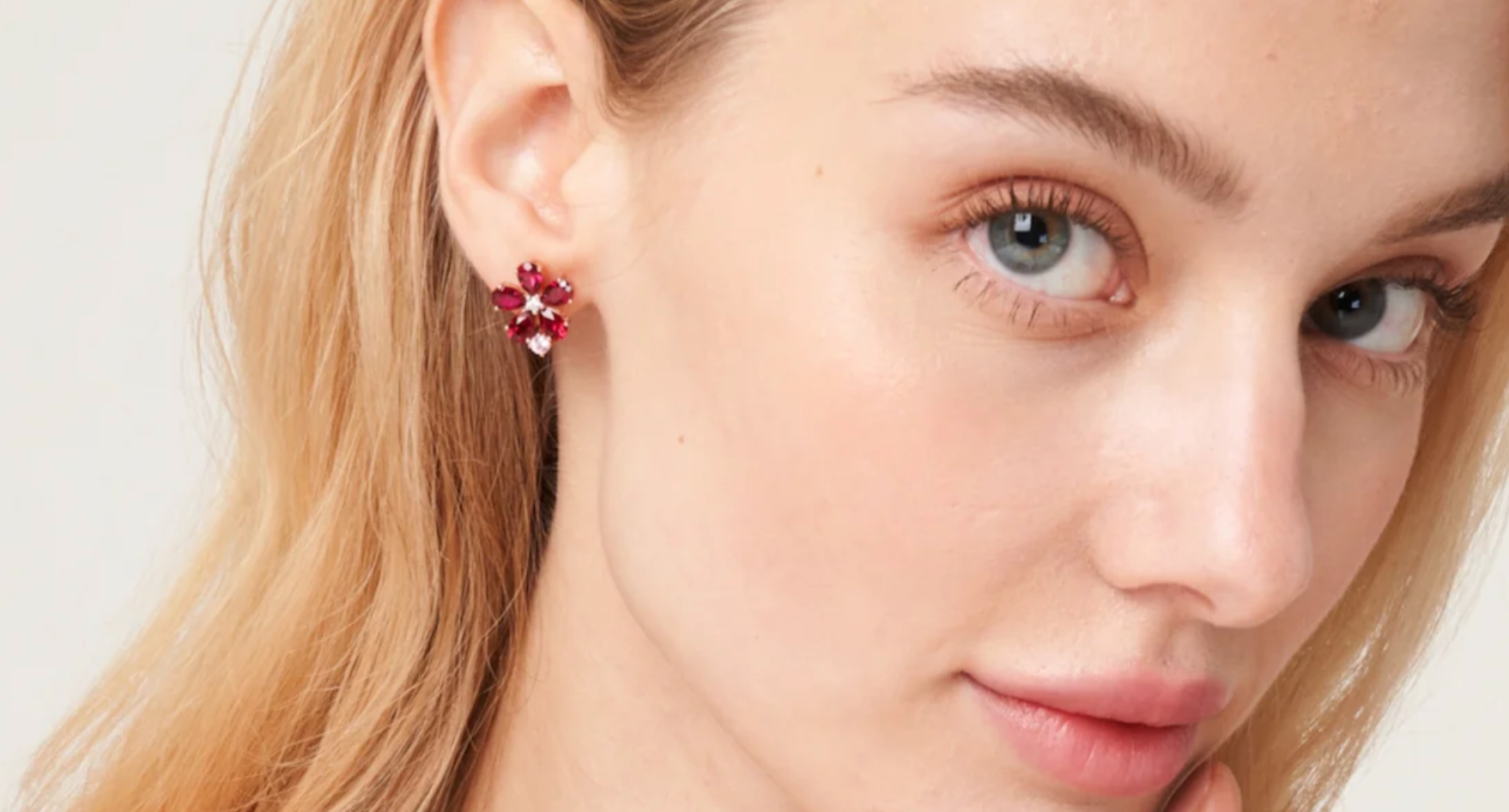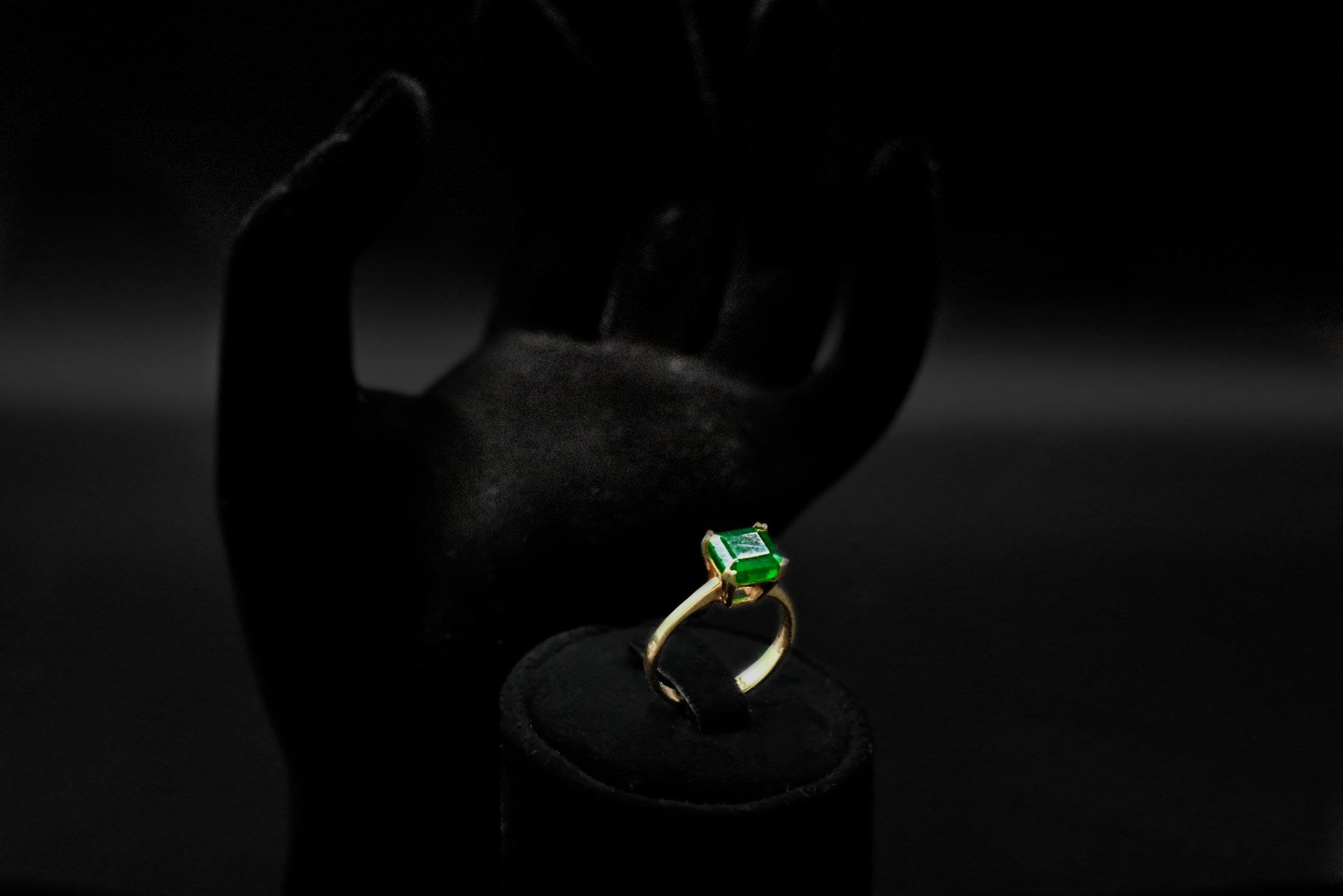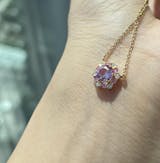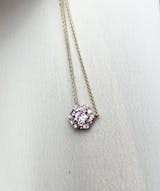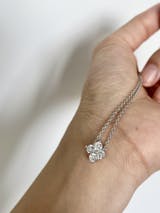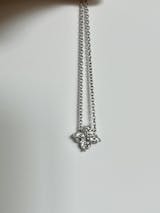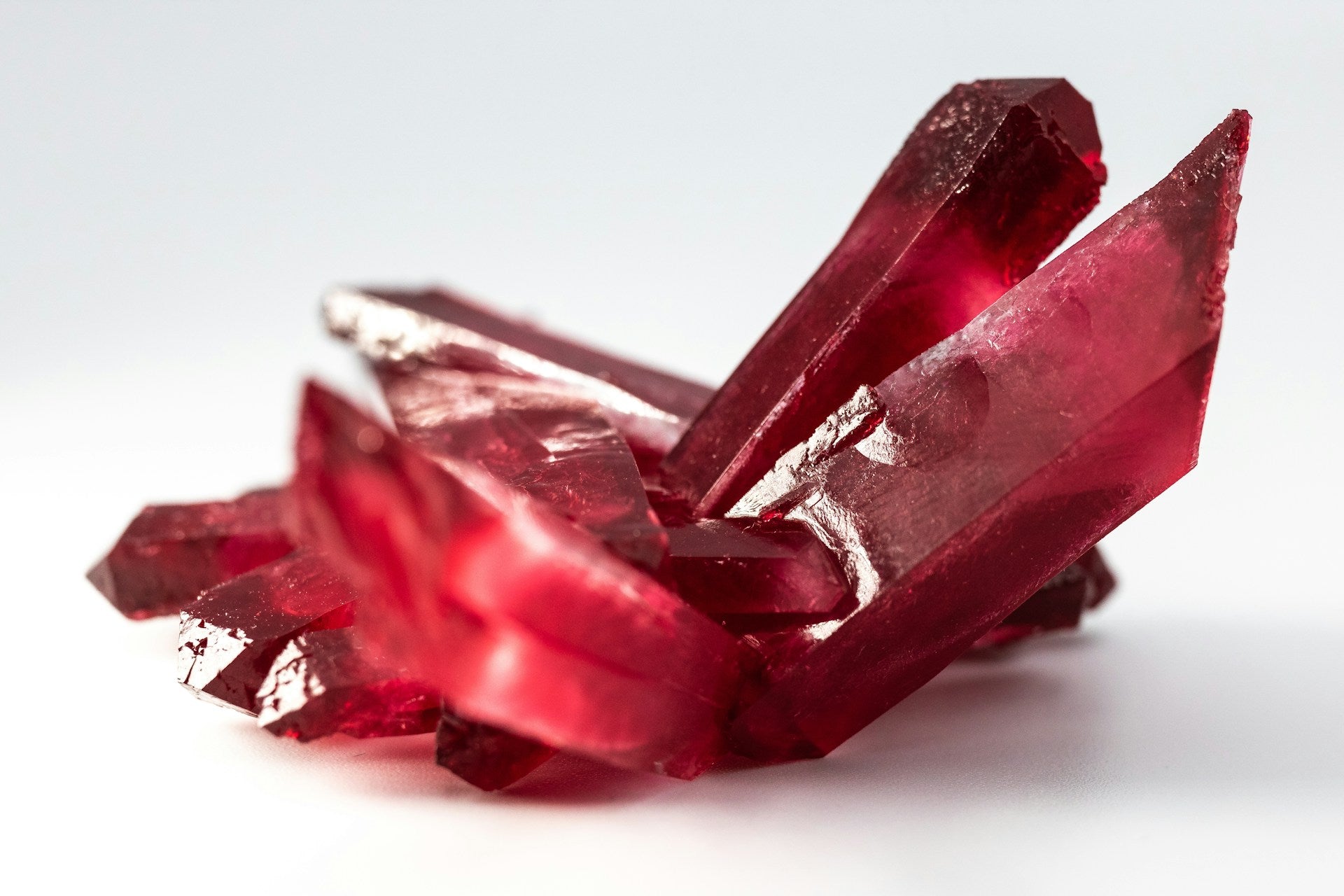
Natural vs Lab Grown Rubies: A Comprehensive Comparison
Table of Content: Inside this Article
...Chemical Composition of Natural Rubies and Formation
Natural rubies are formed deep within the Earth's crust under specific geological conditions. These precious stones are a variety of the mineral corundum, composed primarily of aluminium oxide (Al2O3) with traces of chromium that give rubies their characteristic red colour.
How are Natural Rubies Created?
The formation of natural rubies occurs over millions of years, typically in metamorphic rocks such as marble. High pressure and temperature conditions, along with the presence of specific trace elements, are essential for ruby creation. These gems often form in areas where tectonic plates meet, allowing for the necessary mineral-rich fluids to crystallise into rubies.

How are Lab Grown Rubies Created?
In contrast, lab grown rubies are created in controlled environments that replicate these natural conditions. Two primary methods are used:
Flame Fusion (Verneuil Process)
The Flame Fusion method, also known as the Verneuil Process, was developed by French chemist Auguste Verneuil in 1902. It's one of the oldest and most widely used techniques for creating synthetic rubies.
Process Details:
- Raw Material Preparation: Finely ground aluminium oxide powder is mixed with a small amount of chromium oxide to provide the red colour.
- Powder Feed: This mixture is fed through a narrow opening at the top of a furnace.
- Flame Melting: As the powder falls, it passes through an oxyhydrogen flame that reaches temperatures over 2,000°C (3,632°F).
- Crystallisation: The molten droplets fall onto a rotating pedestal below, where they cool and crystallise.
- Boule Formation: As more droplets fall and solidify, they form a teardrop-shaped crystal called a boule.
- Cooling and Cutting: The boule is cooled slowly to prevent cracking, then cut and faceted into gemstones.
Characteristics of Flame Fusion Rubies:
- Curved growth lines visible under magnification
- Possible gas bubbles
- Very few inclusions
- Consistent colour throughout the stone
Advantages:
- Cost-effective
- Can produce large crystals
- Relatively quick process (a 250-carat boule can be grown in about 2-3 hours)
Limitations:
- The rapid growth can lead to internal stress in the crystal
- The rubies produced are often too "perfect" compared to natural stones
Flux Growth Method
The Flux Growth method is a more recent technique that aims to create lab grown rubies that more closely resemble natural stones.
Process Details:
- Flux Preparation: A flux material (typically lead or bismuth compounds) is mixed with aluminium oxide and chromium oxide.
- Heating: The mixture is placed in a crucible and heated to temperatures between 1,200°C and 1,500°C (2,192°F to 2,732°F).
- Dissolution: At these high temperatures, the aluminium oxide and chromium dissolve in the flux.
- Seed Crystal Introduction: A small ruby seed crystal is suspended in the molten mixture.
- Slow Cooling: The temperature is gradually lowered over several months.
- Crystal Growth: As the solution cools, ruby crystals form around the seed crystal.
- Extraction: Once cooled, the flux is dissolved with acids, leaving the ruby crystals.
Characteristics of Flux-Grown Rubies:
- Can contain flux inclusions
- May have metallic platelets
- Growth patterns more similar to natural rubies
- Can produce larger, high-quality crystals
Advantages:
- Produces rubies that more closely resemble natural stones
- Can create larger, inclusion-free crystals
- Allows for controlled introduction of trace elements to modify colour
Limitations:
- Much slower process compared to Flame Fusion
- More expensive due to the time and materials involved
- Potential for flux inclusions
Despite their different origins, both natural and synthetic rubies share the same chemical composition: Al2O3 with Cr3+ ions. This identical chemical structure means that lab grown rubies possess the same physical and optical properties as their natural counterparts.
Physical Properties of Natural Ruby Gemstone vs Laboratory Grown Rubies
When comparing natural and lab grown rubies, their physical properties are remarkably similar due to their identical chemical composition. However, subtle differences can arise due to the controlled conditions of lab growth versus the variable natural environment.
Hardness and Durability of Rubies: Both natural and lab-grown rubies rank 9 on the Mohs scale of mineral hardness, second only to diamonds.
This high hardness makes rubies excellent choices for jewellery that undergoes daily wear.
Lab grown ruby jewellery gemstones may exhibit slightly more uniform hardness due to their controlled growth conditions, while natural rubies might have minor variations based on their specific formation environment.
The Density of Ruby Gemstone: The density of rubies, whether natural or laboratory grown, typically ranges from 3.97 to 4.05 g/cm³. Synthetic rubies often have a more consistent density within this range due to their controlled growth process, while natural rubies may show slight variations depending on their specific geological origin.
Refractive Index: The refractive index of rubies, which affects their brilliance and light interaction, ranges from 1.762 to 1.770 for both natural and synthetitc varieties. Again, lab grown rubies might display more consistent readings within this range due to their controlled formation.
Thermal and Electrical Conductivity: Regardless of origin, rubies are poor conductors of heat and electricity. However, natural rubies may show slight variations in conductivity due to the presence of trace elements or inclusions specific to their formation environment. Lab-grown rubies tend to have more consistent thermal and electrical properties due to their controlled composition.
Visual Characteristics
While they share many physical properties, their visual characteristics can reveal their origin. Understanding these differences is crucial for both jewellers and consumers.
Colour Range and Intensity: Natural rubies display a range of red hues, from pinkish-red to deep, vivid red, with the most prized being a rich, vibrant red often described as "pigeon's blood". The colour can vary based on the specific geological conditions and trace elements present during formation.
Synthetic rubies can be produced in a similar range of reds, and advancements in technology have allowed for increasingly accurate replication of the most desirable natural ruby colours. However, lab grown rubies often display more consistent colour saturation throughout the stone, while natural rubies may have subtle colour zoning.
Clarity and Inclusion Patterns: Natural rubies typically contain inclusions, which are materials trapped within the gem during its formation. These can include rutile needles (creating a "silk" effect), fingerprints, feathers, or crystals. The pattern and type of inclusions can often help gemologists identify a ruby's origin.
Laboratory grown ruby gemstones can be produced with varying levels of clarity. Some are created to be nearly flawless, while others are intentionally grown with inclusions to mimic natural stones. However, the inclusion patterns often appear more uniform or have characteristics specific to the growth process, such as curved striae or gas bubbles in flame-fusion rubies.
Fluorescence under UV Light: Both natural and artificial grown rubies typically fluoresce under ultraviolet light due to the presence of chromium. Natural rubies often display a strong red fluorescence, which can vary in intensity. Synthetic rubies also fluoresce, but the intensity and pattern may differ slightly from natural stones. Some ruby stones might show a more even fluorescence pattern due to their homogeneous growth conditions.
Explore Juvetti's stunning ruby collection to see these visual characteristics brought to life in exquisite jewellery pieces.
Lab-Grown Rubies vs Natural Rubies: A Comparative Analysis
| Aspect | Lab-Grown Rubies | Natural Rubies |
|---|---|---|
| Cost | ✅ More affordable: $100-$1,000 per carat for high quality | ❌ More expensive: $1,000-$15,000+ per carat for high quality |
| Availability | ✅ Widely available in various sizes | ❌ Rarer, especially in larger sizes |
| Colour Consistency | ✅ Highly consistent colour | ❌ Colour can vary, even within the same stone |
| Clarity | ✅ Often higher clarity, fewer inclusions | ❌ Usually more inclusions, which can affect clarity |
| Size Availability | ✅ Available in larger sizes | ❌ Large, high-quality stones are extremely rare |
| Environmental Impact | ✅ Lower: No mining required | ❌ Higher: Mining can have significant environmental effects |
| Ethical Concerns | ✅ Minimal ethical issues | ❌ Potential issues with mining practices and fair labour |
| Investment Value | ❌ May not appreciate in value | ✅ Can appreciate over time, especially high-quality stones |
| Rarity | ❌ Not rare | ✅ Truly rare, especially fine specimens |
| Historical Significance | ❌ Lack historical allure | ✅ Rich in history and cultural significance |
| Production Time | ✅ Weeks to months | ❌ Millions of years |
| Durability | ✅ 9 on Mohs scale | ✅ 9 on Mohs scale |
| Chemical Composition | ✅ Identical to natural rubies | ✅ Al2O3 with Cr impurities |
| Refractive Index | ✅ 1.762-1.770 | ✅ 1.762-1.770 |
| Heat Conductivity | ✅ Low | ✅ Low |
| Fluorescence | ✅ Strong red under UV | ✅ Strong red under UV |
Pricing and Market Value of Natural and Synthetic Ruby
The cost factors for natural rubies and lab grown varieties differ significantly, impacting their market value and accessibility.
Natural rubies, particularly those of high quality, command premium prices due to their rarity and the complex mining processes involved. Factors influencing natural ruby pricing include:
- Origin: Rubies from renowned sources like Burma (Myanmar) often fetch higher prices.
- Colour intensity: The famed "pigeon's blood" red is most sought-after.
- Clarity: Fewer inclusions generally increase value.
- Size: Larger rubies are rarer and more expensive per carat.
As gemologist Richard Hughes notes, "Fine ruby is one of the rarest of all gemstones, rarer even than diamond."
In contrast, lab grown ruby pricing is generally more stable and affordable. Key factors include:
- Production method: Flux-grown rubies are typically more expensive than flame-fusion stones.
- Quality: Higher clarity and better colour can increase price.
- Size: Unlike natural rubies, larger synthetic stones don't see exponential price increases.
The long-term value considerations for both types differ:
- Natural rubies appreciate over time, especially high-quality stones.
- Lab grown rubies, while more affordable, may not hold value as well due to increasing production capabilities.
Grading and Certification
The grading criteria for natural rubies and the certification process for labgrown rubies are crucial for ensuring transparency and value in the gemstone market.
"Proper certification is essential for both natural and lab grown rubies, providing consumers with confidence in their purchase," states the Gemological Institute of America (GIA).
The importance of gemological reports cannot be overstated. They provide:
- Assurance of the ruby's authenticity
- Detailed quality assessment
- Basis for insurance appraisals
- Confidence for buyers and sellers
Juvetti ensures all their ruby jewellery comes with proper certification, offering customers peace of mind with their purchase.
| Category | Lab-Grown Rubies | Natural Rubies |
|---|---|---|
| Production Volume | Estimated 250-300 million carats annually | Approximately 10-12 million carats annually |
| Market Share (2023) | ~20% of the ruby market | ~80% of the ruby market |
| Price Trends (last 5 years) | Price decreased by ~30% due to improved technology | Price increased by ~25% for high-quality stones |
| Average Size in Jewellery | Often available in larger sizes, average 2-3 carats | Typically smaller, average 0.5-1 carat |
| Treatment Prevalence | ~10% undergo post-growth treatments | ~95% of market rubies are heat-treated |
| Energy Consumption | ~20-30 kWh per carat | Variable, but mining operations generally more energy-intensive |
| Water Usage | Minimal water usage | Up to 126 gallons per carat mined |
| Carbon Footprint | ~4.8 kg CO2 per carat | ~125 kg CO2 per carat (including mining and transportation) |
Frequently Asked Questions
What is the main difference between natural and lab grown rubies?
- The primary difference lies in their origin. Natural rubies form over millions of years in the Earth's crust, while laboratory grown rubies are created in controlled environments using advanced technological processes. However, they share the same chemical composition and physical properties.
Are lab grown rubies real rubies?
- Yes, lab-grown rubies are chemically, physically, and optically identical to natural rubies. They are real rubies, just created in a laboratory rather than in nature.
How can I tell if a ruby is natural or lab grown?
- It's extremely difficult for the average person to distinguish between natural and synthetic rubies. Professional gemologists use advanced equipment and techniques to identify the origin. The most reliable method is to obtain a certificate from a reputable gemological laboratory.
Are natural rubies more valuable than lab-grown rubies?
- Generally, natural rubies are more valuable due to their rarity and the complex processes involved in mining. However, high-quality lab-grown rubies can also be valuable, especially larger stones with exceptional colour and clarity.
Do Lab Grown rubies have inclusions like natural rubies?
- Lab grown rubies can have inclusions, but they're often different from those found in natural rubies. Flux-grown rubies may have metallic flakes or flux remnants, while flame-fusion rubies might have curved growth lines or gas bubbles.
Are artificial rubies more environmentally friendly?
- Lab grown rubies generally have a smaller environmental impact compared to mined rubies, as they don't require extensive mining operations. However, the energy consumption of lab-growing processes should also be considered.
Do lab-grown rubies fade or change colour over time?
- No, lab-grown rubies, like natural rubies, maintain their colour indefinitely. The chromium that gives rubies their red colour is stable and doesn't fade or change over time.


